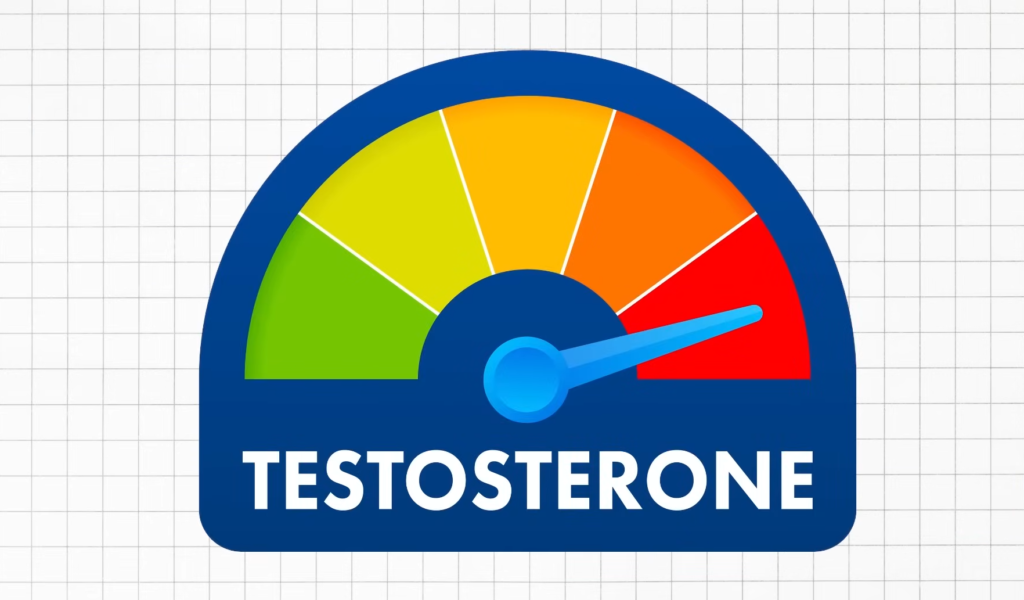
Introduction
What if I told you that you could permanently increase your testosterone levels in just 4 minutes? Would you believe me? And what if I told you that the secret could be as simple as changing the way you breathe? Yes, you heard that right—breathing. Today, we’re going to explore how just 4 minutes of proper breathing can permanently increase your testosterone levels. We’ll delve into the science behind this simple technique and show you how anyone in the world can do it.
How Breathing Affects Your Testosterone Levels
When we don’t breathe efficiently, our bodies struggle to exchange gases properly, leading to an undesirable buildup of carbon dioxide. This isn’t just about feeling out of breath; it’s a cascade of biochemical reactions that significantly impact our health. Increased levels of carbon dioxide can lead to a variety of issues, most notably a decrease in testosterone levels. Testosterone is crucial not just for muscle growth and libido but also for overall vitality and well-being. When carbon dioxide levels rise, the body’s ability to maintain optimal testosterone production diminishes.
Sleep Apnea: The Worst-Case Scenario of Poor Breathing
Sleep apnea involves repeated interruptions in breathing during sleep, severely disrupting your sleep cycle. Symptoms of sleep apnea can range from daytime fatigue and difficulty concentrating to more severe health issues like hypertension and heart disease. Concerning our topic today, sleep apnea’s interference with deep, restorative sleep phases drastically affects hormone balance, particularly reducing the production of hormones like testosterone. This can lead to long-term hormonal imbalances that affect everything from your energy levels to your metabolic health.
The Science Behind Breathing and Testosterone
Sleep apnea and similar breathing disorders disrupt normal breathing patterns, primarily during sleep. This disruption leads to lower oxygen levels and higher carbon dioxide levels in the bloodstream. The lack of oxygen and excess carbon dioxide directly impacts the hypothalamus and pituitary gland, two critical regions in the brain responsible for hormone regulation. When these areas don’t receive enough oxygen, they can’t function properly, leading to decreased production of vital hormones, including testosterone.
Research in this field is extensive. For example, a landmark study published in the Journal of Clinical Endocrinology and Metabolism found that men with obstructive sleep apnea had significantly lower levels of testosterone compared to those without the condition. The study suggested that the interrupted sleep and oxygen deprivation associated with apnea were to blame.
Targeted Breathing Exercises to Boost Testosterone

The Physiological Sigh
The physiological sigh is a double inhale followed by an exhale. This pattern helps rapidly reduce the levels of stress hormones in the body and normalizes our breathing, making it a powerful tool for immediate stress relief. Let’s try this together: take a quick inhale through your nose, then another short inhale right on top of the first, and now a long slow exhale through your mouth. You should feel a wave of relaxation. This technique is not only calming but also helps in efficiently offloading excess carbon dioxide, balancing your blood gases almost instantly.
Nasal Breathing
Unlike mouth breathing, nasal breathing has several significant advantages. Firstly, nasal breathing supports the proper development of the oral and facial structure. More importantly, nasal breathing improves oxygen intake and carbon dioxide offloading because the nose is designed to prepare the air for your lungs in a way that your mouth isn’t. It warms and filters the air, optimizing the gas exchange process. When it comes to sleep, nasal breathing helps maintain steady breathing throughout the night, reducing the likelihood of sleep disruptions and apnea, thus allowing for deeper, more restorative sleep phases crucial for optimal hormone production.
Implementing a Daily Breathing Routine
Incorporating these techniques into your daily routine can significantly enhance your hormonal health and overall well-being. Here’s a straightforward routine:
Morning Routine
Start your day with a physiological sigh right when you wake up. Perform this technique to clear any buildup of carbon dioxide from the night and jumpstart your oxygen levels. It’s a great way to awaken your body and get your blood flowing.
Daytime Routine
Make nasal breathing your default throughout the day. Whether you’re working at your desk, walking, or doing light chores, keep your mouth closed and breathe through your nose. This helps regulate your breathing and ensures optimal oxygen and carbon dioxide levels.
Exercise Routine
Incorporate nasal breathing into your workout routine. Start with light exercises like walking or gentle cycling and focus on breathing through your nose. It might feel challenging at first, especially during more strenuous activities, but with practice, it will improve your endurance and performance.
Evening Routine
Wind down your day with a few physiological sighs before bed. This will help reduce any stress accumulated during the day and prepare your body for a night of deep, restorative sleep. Ensure your bedroom environment supports nasal breathing by keeping it cool and well-ventilated. For those with severe breathing issues such as obstructive sleep apnea, additional tools like nasal strips or a CPAP machine may be necessary.
Enhancing Testosterone Naturally: Additional Tips
Morning Sunlight Exposure

Natural sunlight is crucial for vitamin D synthesis, essential for testosterone production. Spending just 10 to 15 minutes in morning sunlight can significantly boost your vitamin D levels, supporting testosterone production and enhancing your overall health and mood.
Quick, Intense Workouts

A quick, intense workout can elevate your testosterone levels effectively. Try this: 1 minute of burpees, 1 minute of push-ups, 1 minute of lunges, and 1 minute of planks. This routine is designed to be intense and efficient, making it easy to fit into any schedule. Start at a level that challenges you and gradually increase the intensity as you build more strength and endurance.
Reducing Stress and Preparing for Quality Sleep

Engage in light stretching, deep breathing exercises, or mindfulness meditation in the evening. A consistent evening routine helps lower stress hormones and sets the stage for a restful night, optimizing hormone production.
Proper Diet and Nutrition

Healthy fats play a crucial role in hormone production, including testosterone. Sources of beneficial fats include avocados, nuts, seeds, olive oil, and fatty fish like salmon and mackerel. These fats not only support hormone synthesis but also provide anti-inflammatory benefits and support overall cardiovascular health, creating a conducive environment for testosterone production.
Adequate Protein Intake

Adequate protein intake ensures the body has the necessary building blocks for muscle repair and growth, closely linked to testosterone levels. Sources of high-quality protein include lean meats such as chicken and turkey, fish, legumes, and dairy products. Incorporating these into your diet helps maintain muscle mass and supports metabolic processes crucial for hormone balance.
Strength Training

Lifting weights and engaging in compound movements like squats, deadlifts, and bench presses significantly boost testosterone levels. These exercises target multiple muscle groups and stimulate a greater hormonal response compared to isolation exercises. Incorporate strength training into your routine at least three times a week, focusing on high-intensity sessions with heavy weights and lower repetitions to stimulate testosterone production effectively.
High-Intensity Interval Training (HIIT)

HIIT involves short bursts of intense physical activity followed by periods of rest or low-intensity exercise. This type of training is effective for boosting testosterone levels. A typical HIIT routine might include sprints, burpees, or cycling at maximum effort for 30 seconds, followed by 1 to 2 minutes of rest, repeated for 15 to 20 minutes. HIIT not only enhances cardiovascular fitness and burns fat but also triggers a significant hormonal response that includes increased testosterone production.
Conclusion
Breathing might seem like a simple act, but done correctly, it has the power to transform your health in profound ways. Incorporating proper breathing techniques and additional healthy habits into your daily routine can significantly enhance your testosterone levels and overall well-being. Remember, the goal is to make these practices a natural part of your life. They’re not just tasks to check off but habits to cultivate that will significantly enhance your health.
FAQs
1. Can breathing exercises alone improve my testosterone levels?
Yes, proper breathing can help regulate carbon dioxide and oxygen levels in your body, which is crucial for maintaining optimal testosterone production.
2. How often should I practice breathing exercises?
Incorporate breathing exercises into your daily routine. Practice the physiological sigh in the morning and evening, and focus on nasal breathing throughout the day.
3. Can women benefit from these breathing techniques?
Absolutely. While testosterone is more prominent in men, it also plays a crucial role in women’s health. Proper breathing can help maintain hormonal balance in both men and women.
4. How long does it take to see results from breathing exercises?
You may begin to notice benefits within a few weeks, but consistency is key. Regular practice can lead to long-term improvements in your hormonal health.
5. Are there any risks associated with breathing exercises?
Breathing exercises are generally safe. However, if you have any respiratory conditions, consult with a healthcare provider before starting any new breathing routine.


